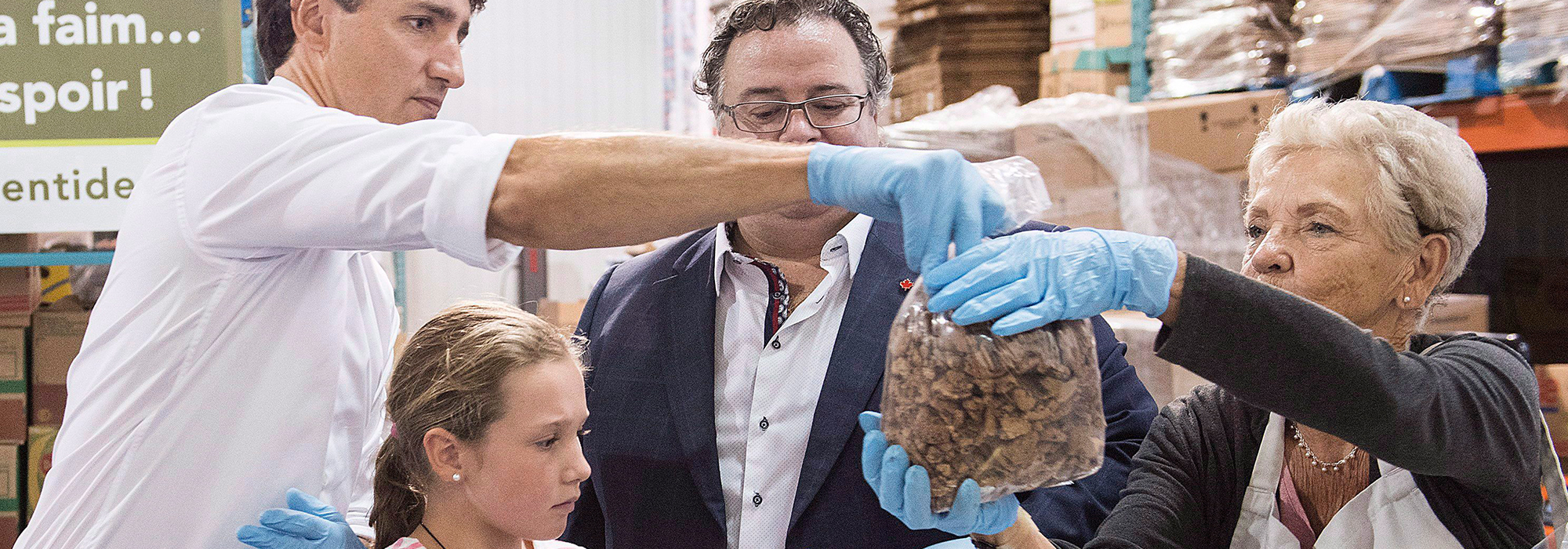
The government of Canada’s new Poverty Reduction Strategy should generate a more comprehensive, informed and productive discourse on Canada’s poverty challenges and what to do about them. This is a potential landmark in the history of social policy in Canada. It bravely confronts seemingly impossible challenges relating to government jurisdiction and the measurement of poverty, while resisting taking the easy route through new spending announcements. The strategy provides a masterful compromise that allows us to move forward now and opens the door for further evolution toward even better solutions in the future.
We know that over time the concepts of poverty have sensibly broadened to include many dimensions of social exclusion, not only lack of income. Increasingly remedies have focused on providing the support that can help people with various interdependent challenges to move ahead and better meet their potential. The strategy recognizes these multidimensional aspects of poverty and embraces the wide range of instruments needed by placing them all explicitly in a common policy tent. This is progress.
It is important that the strategy explicitly embraces a “whole-of-government” approach, putting all the federal bodies that deal with poverty together. Governments often appear to be a set of disconnected “silos” that are difficult for citizens to deal with. This structure causes frustration and weakens the effectiveness of policy initiatives.
In Canada, whole-of-government also implies active engagement and collaboration across different orders of government. The strategy acknowledges the need to work with the provinces and territories — and other stakeholders as well — in order to tackle the full range of needs that clearly span jurisdictional boundaries. Commitments are made in the strategy for further collaboration.
Some, meanwhile, are criticizing the new report for listing all the recent initiatives under way but not announcing new programs with new funding commitments, as well as for not pushing directly into the area of provincial social assistance programming. I, along with members of the Experts Panel on Income Security at the Council of Aging of Ottawa, think these criticisms are misplaced. Many active steps have been taken over the past couple of years, including even in recent days with an announced expansion of employment insurance benefits for seasonal workers.
There is much in the policy pipeline, and it’s clear that effective measures don’t convert into results with a snap of the fingers. That doesn’t work at the personal or family level, and governments are lambasted if they don’t take the time to design, plan and implement changes carefully. Real gains will occur only over time; some patience and a longer view is needed.
The strategy also clearly embraces the concept of “continuous improvement” in policy-making. Conditions are always changing, and so must responses to them. Thus, explicit commitments to continue the work of refining the poverty measures, assessing challenges and adapting policies and programs are welcome. Conquering poverty truly is a continuing journey, not a destination.
As for unfinished business, we believe that the government should look at whether it needs additional internal machinery to support its strategy. It should also further develop data analytics and poverty-related research.
The strategy aims to collect information on a wide range of poverty-related data points including housing, disabilities, skills and so on. The use of these multiple measures, tracked on “dashboards,” is a major step forward and will help avoid undue focus on any one aspect of poverty. We would recommend that data be made accessible digitally to a range of potential users: government program analysts and managers, interest and advocacy groups, research organizations and the public at large.
On the income side alone, the government has set an Official Poverty Line. Based on the current Market Basket Measure, the Official Poverty Line, according to the government’s description, “reflects the combined costs of a basket of goods and services that individuals and families require to meet their basic needs and achieve a modest standard of living.” Still, focusing on this measure risks setting poverty reduction targets that weaken over time. Updating the measure frequently is a noble goal, but one that can be fraught with difficulty.
In our view, it is equally if not more important to use the international Low-Income Measure (LIM), perhaps with a regionally adjusted Canadian version as well. The LIM is a relative concept linking people to living standards enjoyed over time by “average” citizens. Thus, getting out of poverty and securing one’s place once there must mean entering the Canadian mainstream and moving ahead with it, as average incomes advance, for example.
The strategy’s “deep poverty” measure will also be valuable. All of these measures should be regularly published together, as should the data on all dimensions of poverty. Looking at the data in terms of averages calculated over a number of years (“moving averages”) may also make more sense than volatile annual “snapshots.”
On measurement and research more generally, we believe that Canada currently lacks some of the modern, sophisticated microdata and research tools that are needed to properly analyze the broader concepts of poverty that the strategy aims to address. We believe it will require new, strong, sustained federal leadership and significant funding to regain our strength and realize the full potential of the modern measurement and analytical capabilities that are now available and that match advanced international practices. There is not yet a commitment or provision in the strategy to make these investments, but we hope they can be developed and set in motion over time, sooner rather than later.
To improve intergovernmental collaboration, the establishment of a new arm’s-length body seems warranted. We can envisage a centre or institute that would support more effective consensus building on new policy actions or changes, while respecting existing jurisdictions. Such a body might also focus on priorities for developing better pan-Canadian evidence about the multiple dimensions of poverty.
Hopefully the government’s commitment to continuous engagement and improvement will provide opportunities to pursue these ideas further. This important federal initiative deserves celebration and support by all interested parties. We are all invited to join the quest, and we should.
Photo: Prime Minister Justin Trudeau helps to bag cookies with his daughter Ella-Grace during a visit to a food bank in Blainville, Que., on August 16, 2018. THE CANADIAN PRESS/Graham Hughes
Do you have something to say about the article you just read? Be part of the Policy Options discussion, and send in your own submission. Here is a link on how to do it. | Souhaitez-vous réagir à cet article ? Joignez-vous aux débats d’Options politiques et soumettez-nous votre texte en suivant ces directives.









